Walking through the streets of the Hanoi Old Quarter, one cannot help but be captivated by the unique blend of history, culture, and tradition. Among these historic streets, Lan Ong Street stands out as a hub of traditional Vietnamese medicine.
Watch the video summarizing the article “Lan Ong Street: A Hub of Traditional Medicine in Hanoi”
Named after Hai Thuong Lan Ong, a revered Vietnamese physician, this street has for centuries been a center for healing and wellness. The fragrant aroma of medicinal herbs fills the air, and the sight of shops brimming with roots, barks, and powders instantly transports visitors to a bygone era where ancient herbal remedies held the secrets to health. It’s not just a street; it’s an immersive journey into the world of traditional medicine, offering a glimpse of Vietnam’s rich cultural and medical heritage.
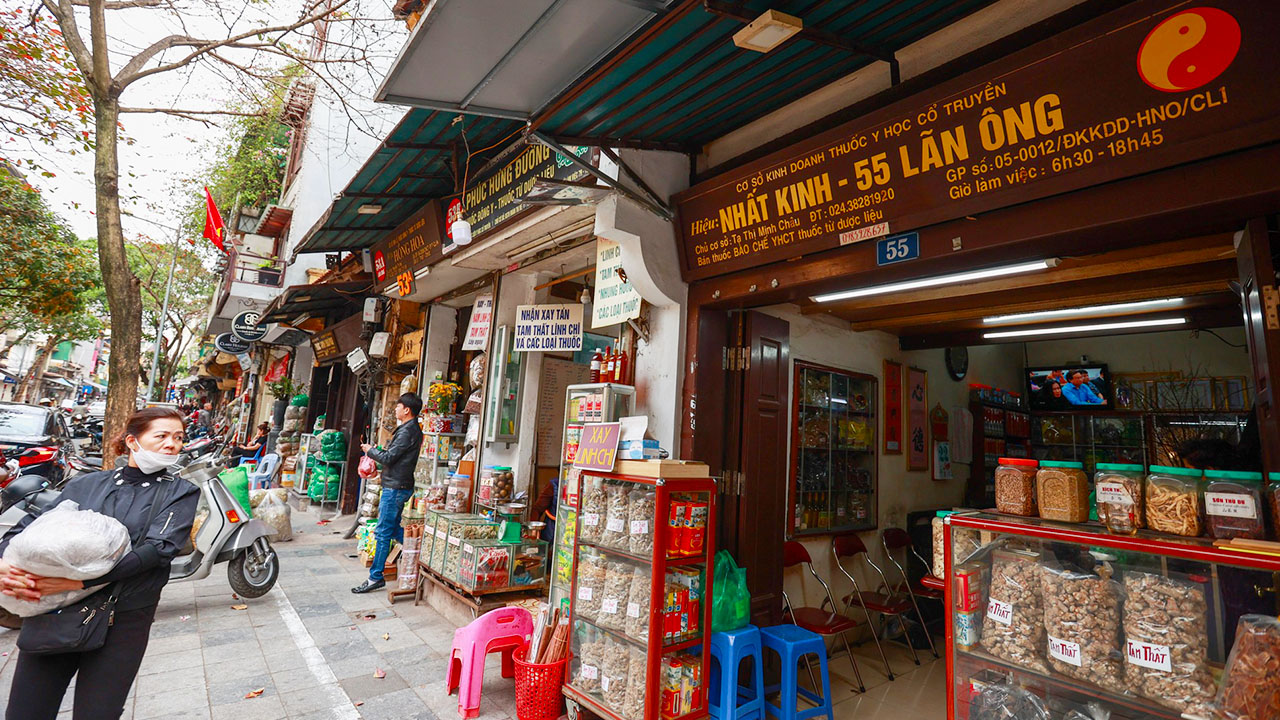
Overview of Lan Ong Street
Located in the bustling Hanoi Old Quarter, Lan Ong Street is a key destination for those seeking traditional Vietnamese medicinal remedies. Its legacy dates back hundreds of years, making it a cornerstone of Hanoi’s elaborate maze of narrow streets. This street offers more than commerce it provides an educational experience on the ancient practices of Vietnamese herbal medicine. Whether you’re a local or a visitor, a walk down Lan Ong Street presents an enthralling mix of sights, sounds, and aromas that highlight the deep-rooted traditions of Vietnamese culture and medicine.
Historical Significance
Lan Ong Street carries a weighty historical significance rooted deep in Vietnamese history. The street is named after Hai Thuong Lan Ong (Le Huu Trac), an 18th-century medical sage credited with composing “Y Tong Tam Linh,” an extensive encyclopedia on Vietnamese traditional medicine. The very essence of the street resonates with his legacy, showcasing a multitude of shops that have been managed by families for generations, preserving the rich rituals and knowledge of herbal medicine.
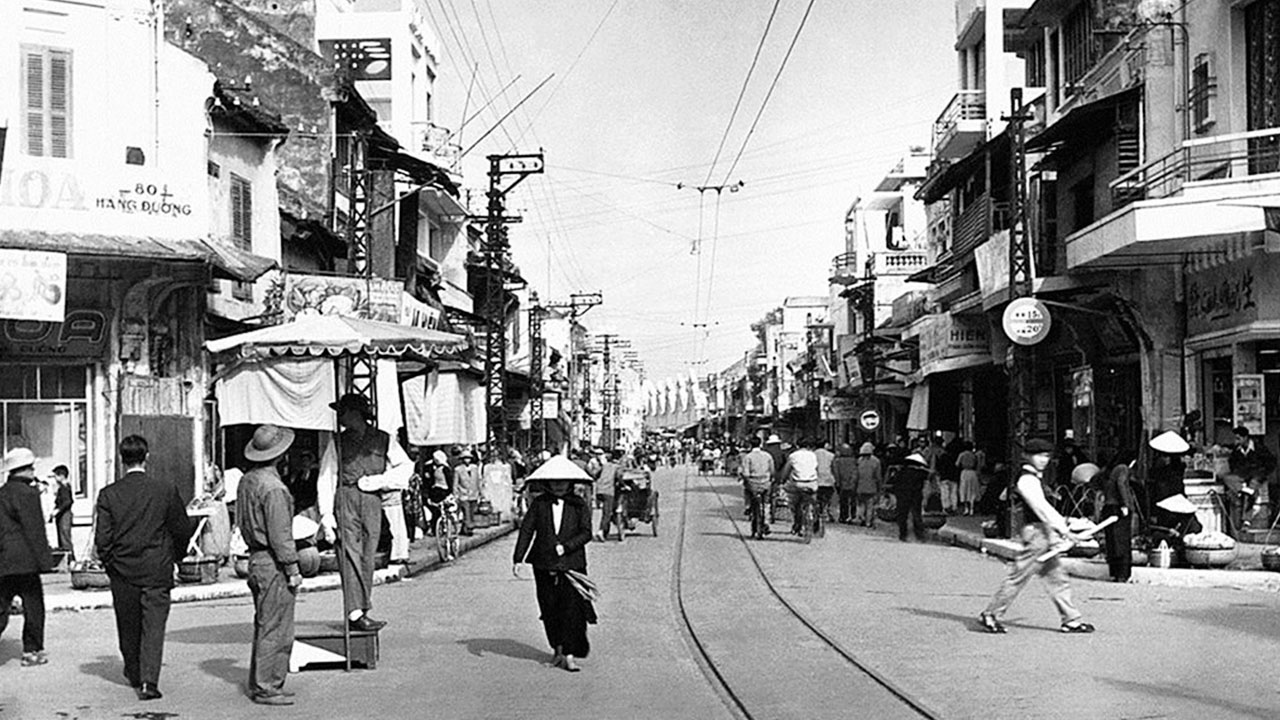
The historical significance of Lan Ong Street is further exemplified by its resilience. Unlike many streets in the Old Quarter that have modernized over the years, Lan Ong Street remains a bastion of tradition. Its shops continue to sell an extensive range of herbal remedies, from common herbs like ginseng and licorice to rare items such as deer antler. This preservation of heritage is a testament to the enduring efficacy and cultural importance of traditional medicine in Vietnamese society.
Moreover, Lan Ong Street historically served as more than just a commercial hub; it was also a crucible for learning and sharing knowledge. Traditional physicians on the street, many of whom were family-trained, have managed to combine ancient wisdom with modern techniques to adapt to changing times. This harmonious blend is symbolized in the street’s atmosphere which merges the old with the new, creating a living museum of traditional Vietnamese medicine that continues to thrive in today’s fast-paced world.
Location and Accessibility
Lan Ong Street is strategically situated within the Hanoi Old Quarter, a dense network of narrow streets bustling with activity and history. It is conveniently accessible from other prominent streets such as Cha Ca Street and Hang Gai Street. Visitors can easily reach Lan Ong Street via various modes of transportation ranging from buses and taxis to the city’s signature cyclo rides.
The street itself is relatively compact, making it easy to explore on foot. Pedestrians are greeted with a sensory overload from the medicinal aromas wafting through the air to the vivid sights of herbs showcased in the street-side shops. The organized chaos is reminiscent of a well-orchestrated ballet, where each component plays a crucial role in creating a compelling experience.
Accessibility is further enhanced by the street’s proximity to essential landmarks and amenities. As you traverse Lan Ong Street, you’ll find it seamlessly connected to other points of interest within the Old Quarter, making it convenient for visitors who wish to explore multiple attractions in one go. This blend of accessibility and central location makes Lan Ong Street not only a hub of traditional medicine but also a starting point for a rich exploration of Hanoi’s fascinating historical and cultural context.
Notable Features
Lan Ong Street is distinguished by several notable features that set it apart from other streets in the Hanoi Old Quarter. The most striking of these features is the diverse assortment of medicinal herbs and remedies that line the street. From the common to the rare, these herbs are meticulously displayed in jars, bags, and baskets, each carrying its unique aroma and medicinal properties. The sheer variety is staggering, offering everything from remedies for common colds to concoctions aimed at boosting overall health and vitality.
The street is also home to a number of traditional physicians and pharmacists, many of whom possess unparalleled expertise in the field of Vietnamese traditional medicine. These practitioners often diagnose ailments merely by feeling a patient’s pulse and provide personalized treatments based on age-old formulations. This unique diagnostic method adds to the street’s charm and authenticity, providing an intimate look at the practice of traditional medicine.
Another notable feature is the architecture of the shops, which have retained their historical essence. Many of these establishments are housed in colonial-style buildings, characterized by wooden shutters, tiled roofs, and intricate carvings. These architectural details serve as a visual feast for visitors and further emphasize the enduring legacy of traditional medicine on Lan Ong Street.
Furthermore, Lan Ong Street is celebrated not just for its medicinal expertise but also for its culinary delights. Herbal infusions and medicinal teas are commonly found here, offering both a unique taste experience and numerous health benefits. This fusion of medicinal wisdom and culinary tradition provides an enriching experience, making the street a holistic haven for those interested in health and well-being.
Traditional Medicine Practices
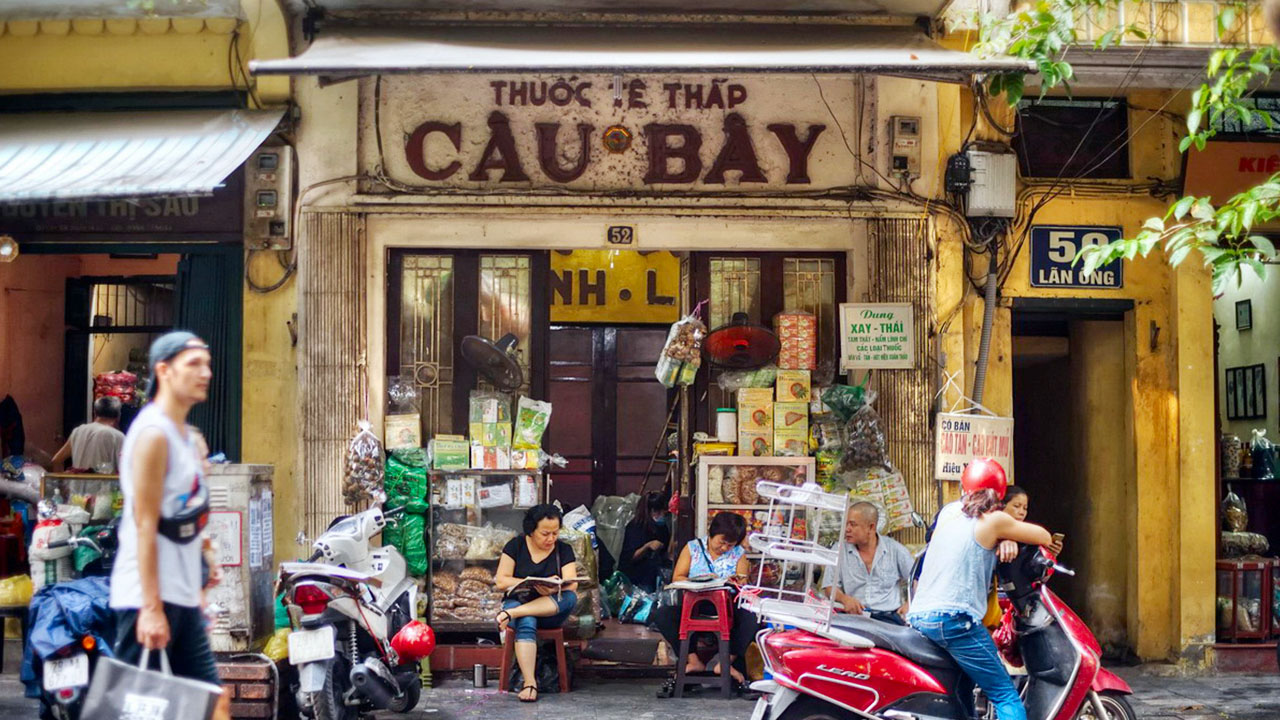
The rich tapestry of traditional medicine practices on Lan Ong Street is mesmerizing. This segment serves as the epicenter for an extensive array of herbal and medicinal products, each holding centuries of wisdom. If you are fascinated by natural remedies, you are in for a treasure trove of information and experiences. The depth of understanding manifested in the shops is a testament to the skill and knowledge passed down through generations.
Types of Herbs Available
One of the most captivating aspects of Lan Ong Street is the diverse variety of herbs available. The street is a veritable garden of nature’s pharmacy, featuring an impressive array of herbs, roots, barks, and powders used in Vietnamese traditional medicine. Take ginseng, for instance, which is highly prized for its energy-boosting and immuno-strengthening properties. This herb is displayed prominently in many shops, its twisted roots a sight to behold.
Similarly, licorice root is another popular herb found on Lan Ong Street. Known for its soothing effects on the digestive system and its ability to alleviate sore throats, licorice root is a staple in Vietnamese herbal medicine. The street also offers more unique herbs, such as deer antler, considered a potent remedy for vitality and strength. This rare ingredient is often displayed with great pride, signaling its esteemed status in the world of traditional medicine.
The comparison between these herbs could be visualized in a table format for better understanding:
| Herb | Main Benefits | Appearance |
|---|---|---|
| Ginseng | Boosts energy, strengthens immunity | Twisted root |
| Licorice Root | Soothes digestive system, alleviates sore throat | Long, thin, and brown |
| Deer Antler | Enhances vitality and strength | Rigid, spiky structure |
Each of these herbs carries an intricate story of its own, often shared by knowledgeable shopkeepers who can elaborate on their properties and uses. Their expertise adds a layer of depth to your shopping experience, making it both educational and enriching.
The Role of Traditional Physicians
Traditional physicians, or thay thuoc dong y, play an indispensable role in the practice of Vietnamese traditional medicine on Lan Ong Street. These learned individuals possess extensive knowledge passed down through generations, allowing them to diagnose and treat a wide array of ailments with remarkable precision. Traditionally, these physicians learned their craft from family members, mastering the delicate balance between nature and wellness.
With the advent of modern educational systems, many of these traditional physicians now undergo rigorous professional training or even study abroad to further hone their skills. They specialize in various aspects of traditional medicine, such as diagnosing illnesses by examining a patient’s pulse or prescribing personalized herbal remedies based on “tongue diagnosis,” a method that analyzes the color, shape, and coating of the patient’s tongue.
The role of these physicians is also pivotal in integrating traditional medicine with modern healthcare practices. While many patients seek traditional treatments as an alternative to modern medicine, others view it as complementary. Conditions that require surgical intervention or antibiotic treatment are best managed through modern medicine, whereas traditional medicine is often effective in managing chronic conditions and promoting overall wellness.
Thus, these physicians serve as bridges between ancient wisdom and contemporary science, ensuring that the best of both worlds is available to patients. Their ability to blend these two approaches is a testament to the enduring relevance of traditional medicine, particularly on Lan Ong Street.
The Process of Herbal Medicine Preparation
The process of herbal medicine preparation on Lan Ong Street is an intricate blend of art and science, preserving centuries-old techniques while adapting to modern standards. This meticulous process often begins with the careful selection of herbs. Shop owners and traditional physicians alike are highly discerning about the quality of their ingredients, ensuring that only the best herbs are used in their remedies.

Once the herbs are selected, they undergo various stages of processing. Drying is a crucial step, primarily done using natural methods such as sun-drying to retain the herbs’ potency. Some herbs are also roasted, ground, or powdered depending on their intended use. A traditional method known as “steaming” involves steaming herbs to soften them, which aids in the extraction of their medicinal properties.
Another fascinating aspect is the formulation of herbal concoctions. These traditional recipes, often handed down through generations, are incredibly precise. Ingredients are measured in exact quantities and combined in specific orders to maximize their healing properties. The resulting mixtures can be in the form of teas, infusions, ointments, or pills, each serving a distinct medicinal purpose.
The preparation also involves a profound understanding of the compatibility of different herbs. Some herbs complement each other and enhance each other’s effects, while others may counteract or diminish the efficacy of one another. This intricate knowledge ensures that herbal remedies are both effective and safe for consumption.
In summary, the preparation of herbal medicine on Lan Ong Street is not just a process; it is a cherished tradition that encapsulates the collective wisdom of Vietnamese traditional medicine. It is this thoroughness and attention to detail that make these remedies so revered and effective.
Shopping Experience
The experience of shopping on Lan Ong Street is a sensory delight, steeped in tradition and authenticity. The fragrance of medicinal herbs permeates the air as you navigate through the crowded shops, each filled with a staggering array of herbal products. As you delve deeper, the sight of elderly shopkeepers meticulously arranging their herbs and the murmured conversations between buyers and sellers evoke a sense of timelessness.
Popular Herbal Shops
Lan Ong Street is home to numerous herbal shops, each offering a unique selection of medicinal products. One of the most renowned shops is Thuoc Bac Hai Thuong Lan Ong, known for its extensive variety of traditional herbal remedies. The shop has been in operation for several generations, continuing to attract both locals and tourists seeking quality medicinal herbs.
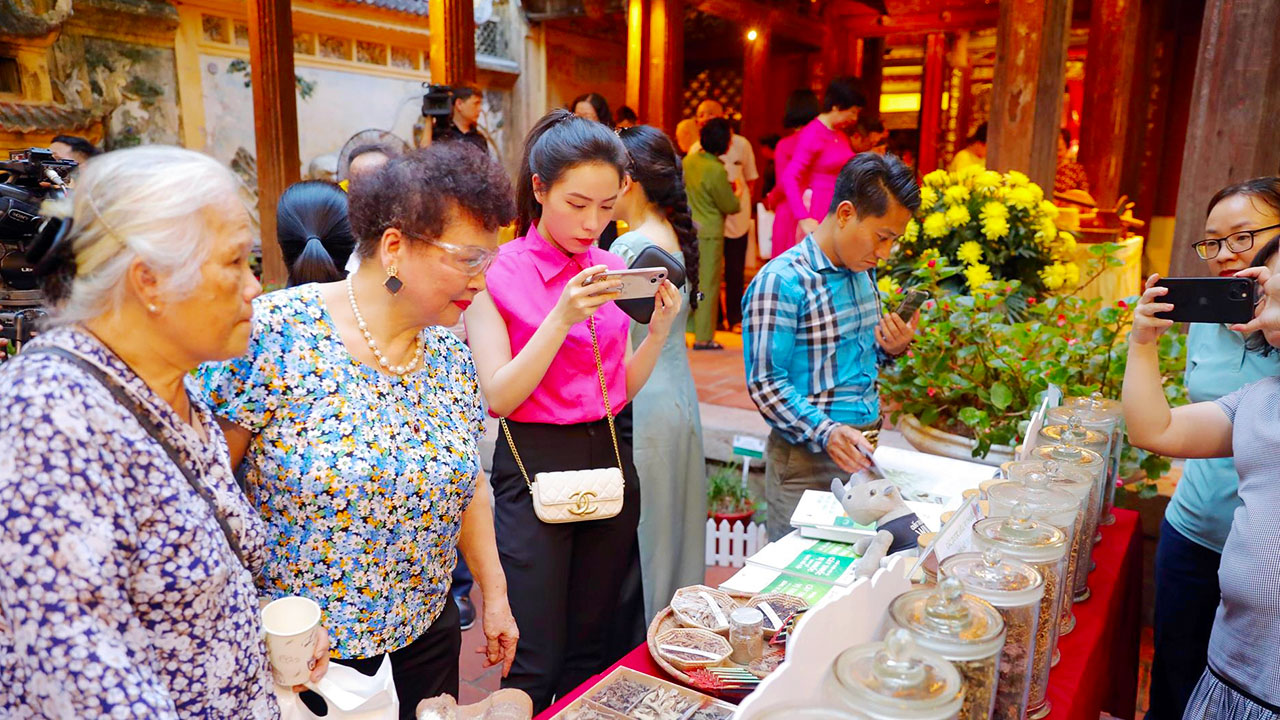
Another popular establishment is Dong Y Hoa Xuan, a family-run business that specializes in rare and exotic herbs. This shop is particularly famous for its extensive collection of deer antlers and other animal-derived medicines, which are carefully procured and processed to ensure maximum efficacy.
Herbal Oasis, another well-regarded shop on the street, prides itself on its organic and sustainably sourced herbs. The shop’s minimalist decor and emphasis on sustainable practices make it a hit among environmentally-conscious consumers. Each of these shops offers a unique blend of traditional wisdom and modern convenience, providing a holistic shopping experience.
In addition to these well-known establishments, many smaller shops also dot the street, each with its unique charm. The diversity of options available ensures that both seasoned herbalists and curious novices can find something of value.
Pricing and Product Quality
The pricing and product quality on Lan Ong Street vary depending on the type of herb and its rarity. Common herbs such as ginseng and licorice root are generally affordable, while rare ingredients like deer antler and certain mushrooms can be quite expensive. The quality of the products is generally high, as most shop owners take great pride in the authenticity and efficacy of their offerings.
It is important to note that prices are often negotiable. Bargaining is a common practice on Lan Ong Street, and shoppers are encouraged to engage in this cultural tradition. It’s not just about securing a better deal; it’s also a way to interact with shopkeepers and learn more about the products they offer.
Here’s a comparative table outlining the average prices and quality indicators for some popular herbs:
| Herb | Average Price (VND) | Quality Indicators |
|---|---|---|
| Ginseng | 500,000 to 1,000,000 per kg | Firm, well-shaped roots, rich aroma |
| Licorice Root | 200,000 to 400,000 per kg | Uniform color, distinct sweet smell |
| Deer Antler | 3,000,000 to 5,000,000 per kg | Rigid, ivory-like texture, consistent thickness |
As highlighted, while some herbs are pricey due to their rarity, the careful selection and quality assurance processes ensure that you get the best value for your money. Always be on the lookout for quality indicators such as color, aroma, and texture to make informed purchasing decisions.
Unique Offerings and Souvenirs
Apart from medicinal herbs, Lan Ong Street offers a variety of unique items and souvenirs that capture the essence of Vietnamese culture. One noteworthy item is herbal incense, which combines the aromatic properties of medicinal herbs with traditional crafting techniques. These incense sticks are often used in ceremonial settings and make for a unique, aromatic gift.
Another popular souvenir is herbal teas. Unlike regular teas, these are formulated for specific health benefits, such as improving digestion or boosting immunity. Packaged in beautifully designed boxes, these teas serve as both a practical remedy and a thoughtful gift.
Herbal balms and ointments are also widely available. These products, often handmade, come in compact containers and are ideal for addressing minor aches and pains. The soothing aromas and effective formulations make them a popular choice among both locals and tourists.
Lastly, traditional medicinal books are a treasure trove of knowledge. These books, often written by renowned traditional physicians, provide detailed insights into the world of Vietnamese herbal medicine. They serve as an excellent resource for anyone interested in learning more about this ancient practice.
In summary, Lan Ong Street offers a rich array of unique offerings and souvenirs that provide more than just material value they offer a piece of Vietnam’s cultural and medicinal heritage.
Culinary Delights
Lan Ong Street is not just about medicine; it’s also a culinary haven that tantalizes the taste buds of every visitor. The street is renowned for its unique blend of traditional medicinal foods and street food, making it an unmissable stop for food enthusiasts. The flavors here are a testament to the enduring legacy of Vietnamese cuisine, which seamlessly integrates ingredients that are both delicious and beneficial for one’s health.
Street Food Surrounding Lan Ong Street
The area surrounding Lan Ong Street is dotted with numerous street food vendors, each offering a mouth-watering array of Vietnamese delicacies. One of the most popular dishes is Pho Cuon, a type of fresh spring roll made with grilled beef, herbs, and a rich, flavorful dipping sauce. These rolls are light, refreshing, and packed with flavor, making them a favorite among locals and tourists alike.
Another must-try is Banh Mi, the iconic Vietnamese sandwich. Several renowned Banh Mi vendors are strategically located near Lan Ong Street, offering a variety of fillings, from grilled pork to Vietnamese sausage, all nestled in a crispy baguette. Each bite is a delightful mix of textures and flavors, perfectly capturing the essence of Vietnamese street food.
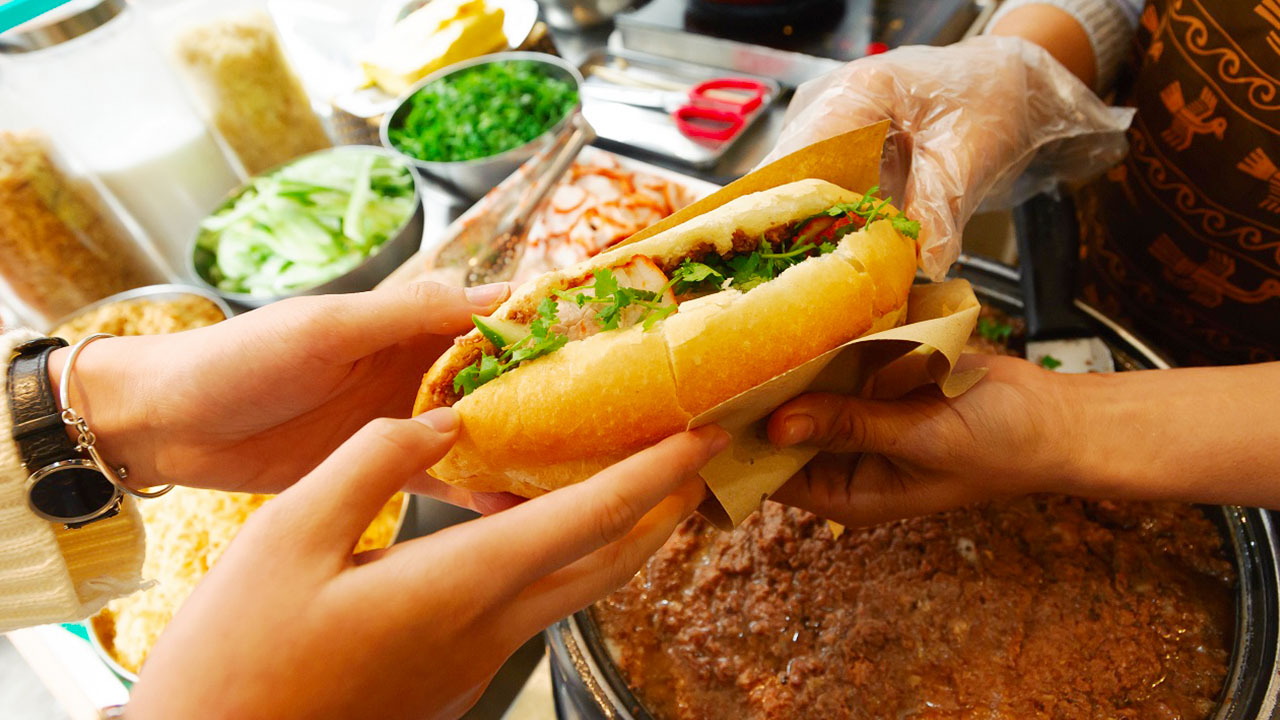
For those with a sweet tooth, Che, a traditional Vietnamese dessert, is readily available. This sweet soup made from beans, fruits, and coconut milk offers a refreshing end to your culinary journey on Lan Ong Street. The diversity of street food options ensures that there’s something for everyone, making every visit an unforgettable gastronomic adventure.
Medicinal Foods and Drinks
Lan Ong Street also offers a variety of medicinal foods and drinks that are deeply rooted in Vietnamese culinary traditions. One of the most popular medicinal foods is chicken noodle soup with medicinal herbs. This comforting dish not only satisfies the palate but also nourishes the body, thanks to the addition of herbs like ginseng and goji berries, known for their immune-boosting properties.
Medicinal teas are another highlight. Shops along Lan Ong Street offer a wide array of herbal teas, each designed to address specific health concerns. Whether you’re looking to improve digestion, enhance immunity, or simply relax, there’s a tea that fits your needs. These teas are often brewed using a blend of herbs, providing both therapeutic benefits and delightful flavors.
For a quick and healthy snack, herbal jelly is a popular choice. Made from natural ingredients like agar-agar and infused with medicinal herbs, this jelly is both refreshing and beneficial for health. It’s a perfect example of how Vietnamese cuisine incorporates medicinal ingredients to create dishes that are both tasty and healthy.
Local Eateries and Recommendations
Lan Ong Street is surrounded by numerous local eateries that offer a cozy, authentic dining experience. One noteworthy establishment is Pho Bat Dan, renowned for its savory pho that draws long lines of eager customers. The rich broth, tender noodles, and fresh herbs make it a must-visit for anyone exploring the area.
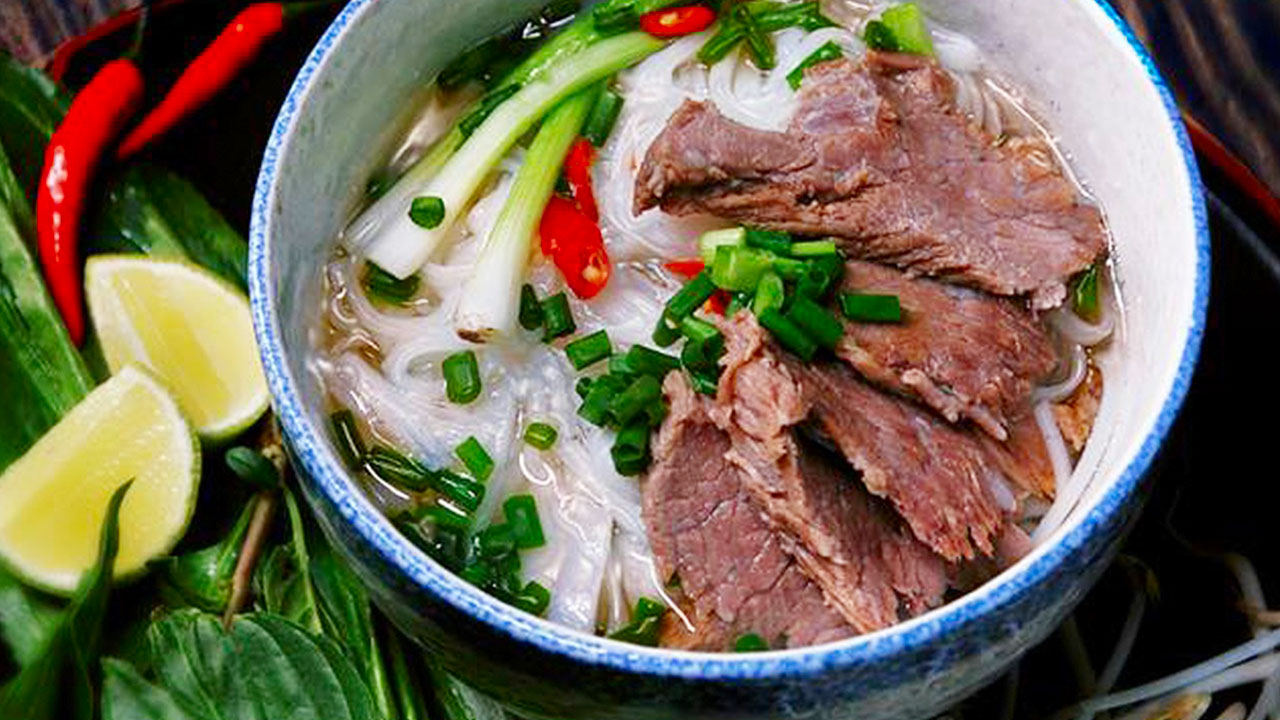
Another highly recommended eatery is Banh Mi 25, famous for its delicious, freshly-made banh mi sandwiches. The combination of crispy bread, flavorful fillings, and tangy condiments makes it a perennial favorite among both locals and tourists.
For those interested in a sit-down meal, Quan An Ngon, located a short walk from Lan Ong Street, offers a wide array of traditional Vietnamese dishes. The restaurant’s rustic decor and extensive menu provide a charming setting to enjoy a meal while soaking in the local ambiance.
To enhance your culinary experience, consider trying out a local food tour. These tours often include stops at some of the best eateries in and around Lan Ong Street, offering a curated experience that highlights the area’s culinary gems. Whether you prefer street food snacks or heritage-rich dishes, these tours provide an in-depth exploration of Vietnamese gastronomy.
Cultural Experiences
Lan Ong Street offers more than just medicinal and culinary delights; it also provides a rich array of cultural experiences that immerse visitors in the vibrant tapestry of Vietnamese heritage. From traditional festivals to engaging interactions with local vendors, every moment on this storied street is a step deeper into the world of Vietnamese culture and tradition.
Festivals and Events
One of the most captivating aspects of Lan Ong Street is the vibrant festivals and events that take place throughout the year. One of the most prominent festivals is the Tet Nguyen Dan (Lunar New Year), during which the street comes alive with colorful decorations, lively performances, and an atmosphere of celebration. Shops are adorned with red and gold, symbolizing luck and prosperity, and the air is filled with the sounds of traditional music and drums.
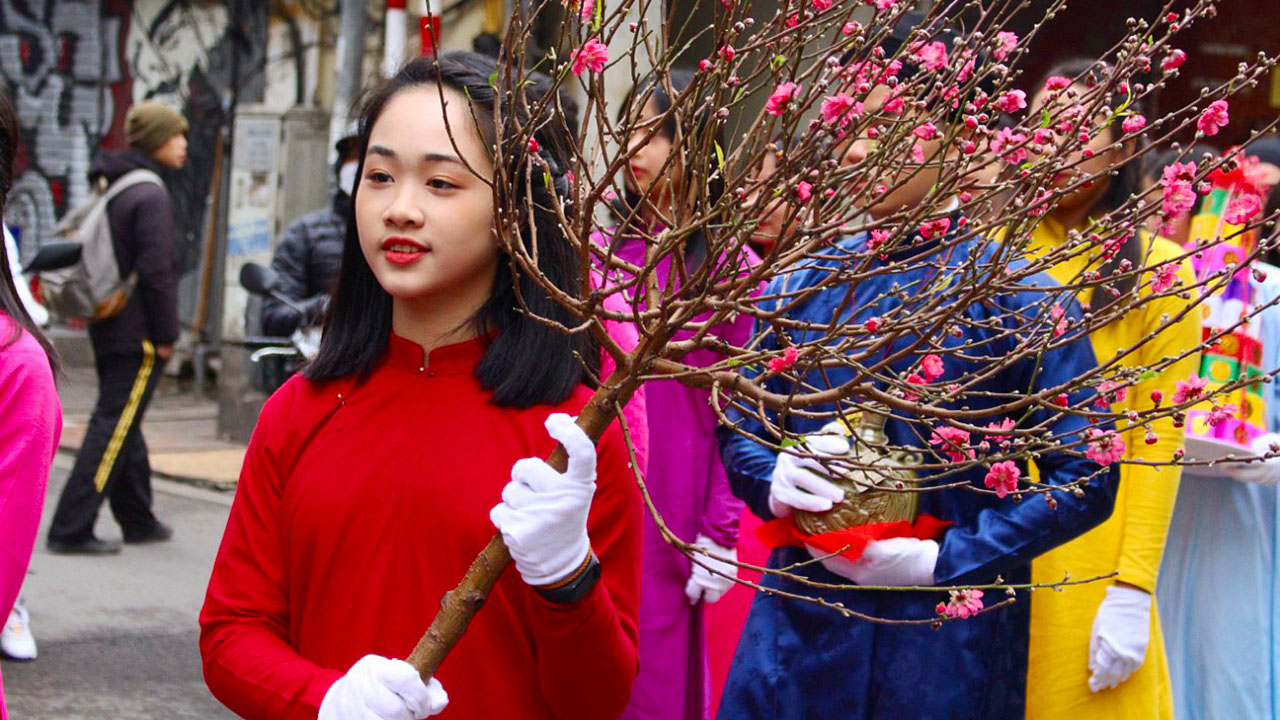
Another significant cultural event is the Mid-Autumn Festival. During this time, the street is festooned with lanterns, and various cultural performances, such as lion dances and traditional music shows, takeplace. Vendors sell mooncakes and other traditional treats associated with the festival, adding to the festive atmosphere. These events not only provide a captivating visual and auditory experience but also offer a deeper understanding of Vietnamese customs and traditions.
The Lan Ong Traditional Medicine Festival is another notable event. Held annually, this festival celebrates the legacy of traditional Vietnamese medicine. Demonstrations of herbal medicine preparation, lectures by renowned traditional physicians, and the sale of rare medicinal herbs are some of the highlights. This festival is an excellent opportunity to learn more about the history and practices of traditional medicine directly from experts and practitioners.
Each of these festivals and events brings the community together, creating a sense of unity and shared cultural heritage. They offer a unique glimpse into the soul of Vietnamese culture, making Lan Ong Street a vibrant and enriching destination for visitors.
Interactions with Local Vendors
The interactions with local vendors on Lan Ong Street are an integral part of the cultural experience. The vendors, many of whom have been selling their herbal remedies for generations, are a wealth of knowledge and stories. Engaging in conversations with them can provide valuable insights into the history and uses of the various herbs and remedies they sell.
One of the most endearing aspects of these interactions is the genuine warmth and hospitality extended by the vendors. They are often eager to share their knowledge and may even offer to demonstrate how certain remedies are prepared. This personal touch adds a layer of authenticity to the experience, making it more than just a transactional encounter.
Moreover, bargaining is a common practice on Lan Ong Street, and participating in this cultural tradition can be quite enjoyable. It’s a dance of words, where both buyer and seller aim to find a mutually agreeable price. This interaction is not only about securing a good deal but also about building a connection and understanding the value of the products being purchased.
Insight into Traditional Vietnamese Medicine
Walking down Lan Ong Street provides a profound insight into the world of traditional Vietnamese medicine. This ancient practice, deeply rooted in Vietnamese culture, combines the use of natural herbs, meticulous preparation methods, and a holistic understanding of health and wellness.
Traditional Vietnamese medicine emphasizes the balance of the body’s internal energy, known as “chi”, and the harmony between hot and cold elements. The remedies aim to restore this balance, treating not just the symptoms but the root cause of ailments. This approach is in stark contrast to the symptomatic treatment often seen in Western medicine, highlighting the philosophical differences between the two systems.
The use of herbs is central to traditional Vietnamese medicine. Each herb is selected based on its unique properties and its ability to interact synergistically with other ingredients. This meticulous care in preparation ensures the effectiveness of the remedies. The expertise of traditional physicians, who can diagnose ailments by examining the pulse and tongue, further underscores the depth of knowledge involved in this practice.
Lan Ong Street offers a living testament to the enduring relevance of traditional medicine. The continuous operation of herbal shops and the evident demand for traditional remedies reflect a cultural preference for natural and holistic approaches to health. This insight into traditional Vietnamese medicine enriches the overall experience of visiting Lan Ong Street, offering a deeper appreciation of Vietnam’s cultural and medical heritage.
Tips for Visitors
Visiting Lan Ong Street can be a deeply enriching experience if you know what to look for and how to navigate its offerings. From the best times to visit to essential tips on cultural etiquette, here’s a comprehensive guide to making the most out of your trip to this iconic street in Hanoi’s Old Quarter.
Best Times to Visit
The best times to visit Lan Ong Street are during the early morning and late afternoon. In the early morning, the street is just coming to life, with shopkeepers opening their doors and the air filled with the fresh aroma of herbs. This time offers a more tranquil experience, allowing you to explore the shops and interact with vendors without the usual hustle and bustle.
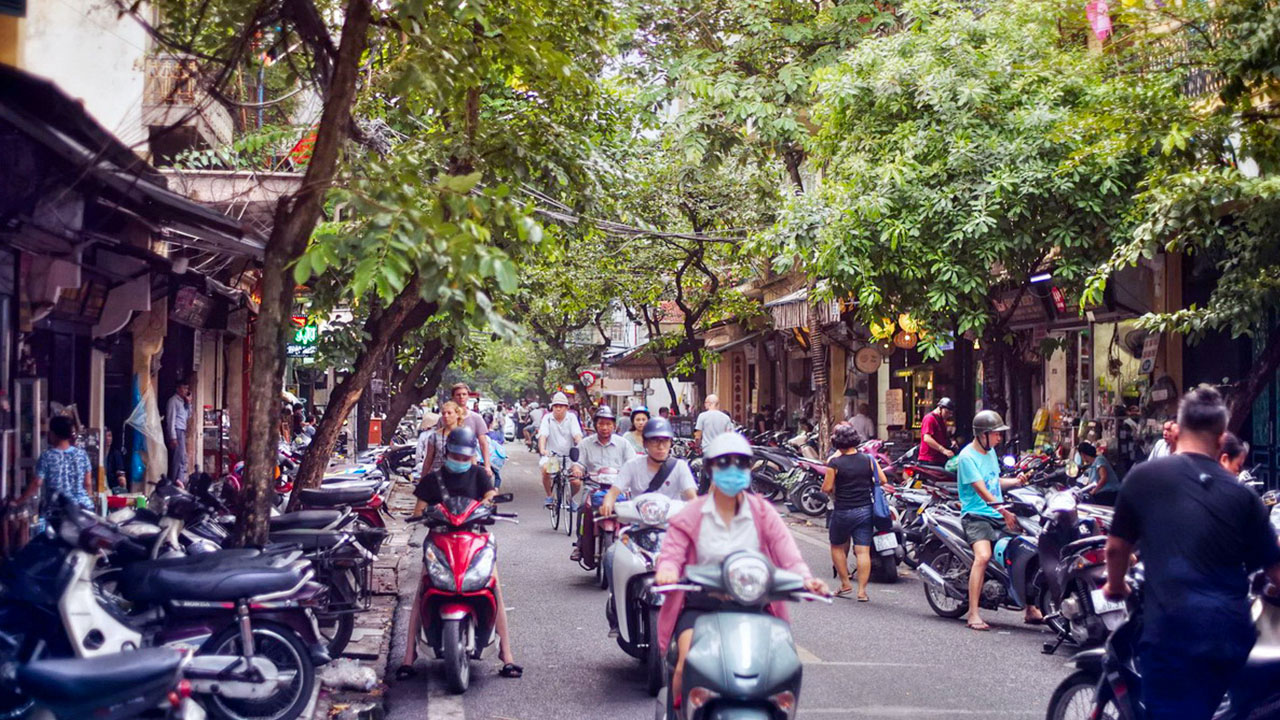
Late afternoons are another excellent time to visit. As the day cools down, the street becomes more vibrant with locals and tourists alike, creating a lively atmosphere. If you time your visit around festival seasons such as Tet Nguyen Dan or the Mid-Autumn Festival, you’ll experience an added layer of cultural richness, with colorful decorations and various cultural activities.
It’s also advisable to avoid visiting during the peak midday hours when the sun is at its strongest, making the narrow streets uncomfortably hot and crowded. Planning your visit around these optimal times ensures a more pleasant and fulfilling experience.
Navigation and Transportation
Navigating Lan Ong Street and the surrounding Hanoi Old Quarter can be challenging due to the narrow streets and bustling activity. However, with a bit of planning, you can easily explore the area and make the most of your visit.
Walking is the most practical way to navigate Lan Ong Street. The compact nature of the Old Quarter makes it ideal for pedestrians, allowing you to fully immerse yourself in the atmosphere. Comfortable walking shoes are a must, as the streets can be uneven and crowded.
For longer distances, consider using cyclo rides. These traditional three-wheeled bicycles provide a unique way to explore the Old Quarter. They are not only convenient but also offer a leisurely pace, allowing you to take in the sights and sounds of the area.
Public transportation options such as buses and taxis are also available. Buses are an economical choice, with several routes passing through the Old Quarter. However, keep in mind that navigating the bus system can be challenging if you are not familiar with the routes. Taxis offer a more straightforward option, but it’s essential to use reputable companies to avoid any inconveniences.
Using ride-hailing apps like Grab is another convenient option. These apps allow you to book rides easily and provide fare estimates, ensuring a hassle-free experience. Regardless of your chosen mode of transportation, planning your route in advance can help you navigate Lan Ong Street and the surrounding areas more efficiently.
Cultural Etiquette
Understanding and respecting local cultural etiquette can significantly enhance your experience on Lan Ong Street. Here are some essential tips to keep in mind:
- Politeness and Respect: Vietnamese culture places a high value on politeness and respect. Always greet shopkeepers and vendors with a smile and a nod. Learning a few basic Vietnamese phrases such as “Xin chao” (hello) and “Cam on” (thank you) can go a long way in establishing a positive rapport.
- Bargaining: Bargaining is a common practice on Lan Ong Street, but it should be done respectfully. Start by offering a price slightly lower than what you are willing to pay and be prepared to meet in the middle. Keep the negotiation friendly and avoid being overly aggressive.
- Dress Modestly: While there are no strict dress codes, it’s advisable to dress modestly out of respect for local customs. Avoid wearing overly revealing clothing and opt for comfortable, casual attire.
- Photography: Always ask for permission before taking photographs, especially inside shops. Some vendors may be uncomfortable with having their products photographed without consent. Asking politely ensures you respect their privacy and build goodwill.
- No Touching: Avoid touching products unless you intend to buy them, as this is considered disrespectful. If you wish to examine something closely, ask the vendor for permission first.
By observing these cultural etiquettes, you can ensure a respectful and enjoyable visit, fostering positive interactions and leaving a lasting impression.
Combining Tradition and Modern Practices
In recent years, Lan Ong Street has seen a fascinating amalgamation of traditional and modern medical practices. This blend enriches the street’s legacy, ensuring its relevance in the contemporary world. From integrating Western medicine to introducing innovative herbal products, Lan Ong Street continues to evolve while preserving its rich heritage.
Integration of Western Medicine
Vietnamese traditional medicine and Western medicine are two distinct approaches to healthcare, each with its unique strengths and weaknesses. On Lan Ong Street, these two practices are not seen as mutually exclusive but rather complementary.

Traditional medicine is particularly effective for chronic conditions and overall wellness, focusing on restoring balance within the body. In contrast, Western medicine excels in treating acute and infectious diseases and performing complex surgeries. Many Vietnamese people prefer to combine both approaches to achieve holistic health.
This integration is facilitated by the growing number of traditional physicians who have received training in both traditional and modern medical practices. These physicians often use traditional diagnostic methods, such as pulse and tongue examination, alongside modern diagnostic tools like blood tests and imaging. This comprehensive approach ensures a more accurate diagnosis and allows for personalized treatment plans that incorporate the best of both worlds.
Additionally, many herbal shops on Lan Ong Street now offer products that blend traditional herbs with modern supplements. These products are designed to enhance overall health and well-being, providing a natural complement to modern treatments. This synergy between traditional and modern medicine not only enhances the efficacy of treatments but also broadens the appeal of traditional medicine to a wider audience.
Changing Landscape of Health in Hanoi
The health landscape in Hanoi has seen significant changes over the years, with a growing emphasis on holistic wellness and preventive care. Lan Ong Street has been at the forefront of this transformation, adapting its offerings to meet the evolving needs of its customers.
One noticeable change is the increasing demand for organic and sustainably sourced herbs. As people become more conscious of the environmental impact of their choices, there is a growing preference for herbs that are grown without synthetic pesticides or fertilizers. Many shops on Lan Ong Street have responded to this demand by offering a range of organic products, ensuring that customers receive the highest quality remedies.
Another significant shift is the incorporation of wellness services, such as herbal massages and acupuncture, into the offerings on Lan Ong Street. These services provide additional avenues for traditional healing and relaxation, enhancing the overall experience for visitors. By integrating these wellness practices, Lan Ong Street continues to evolve as a comprehensive hub for health and well-being.
The changing landscape of health in Hanoi is also reflected in the increased collaboration between traditional physicians and modern healthcare providers. This collaboration ensures that patients receive well-rounded care, addressing both the symptoms of their ailments and their underlying causes. As the health landscape continues to evolve, Lan Ong Street remains a vital part of Hanoi’s medical fabric, preserving its rich heritage while embracing modern innovations.
Innovative Herbal Products
The introduction of innovative herbal products has further cemented Lan Ong Street’s reputation as a center for traditional medicine. These products, often a blend of age-old wisdom and modern science, offer new ways to experience the benefits of traditional herbs.
One such innovation is the development of herbal supplements. These supplements, available in the form of capsules, powders, and tinctures, provide a convenient way to incorporate medicinal herbs into daily routines. They are carefully formulated to ensure optimal potency and effectiveness, making it easier for people to reap the benefits of traditional medicine.
Another notable innovation is the production of natural skincare products. Drawing on the medicinal properties of herbs, these products are designed to nourish and rejuvenate the skin. From herbal face masks to moisturizing creams, these skincare items offer a holistic approach to beauty and wellness.
Functional foods are also gaining popularity on Lan Ong Street. These foods, enriched with medicinal herbs, provide both nutritional and therapeutic benefits. Examples include herbal teas, snacks, and even beverages infused with herbs known for their health-boosting properties.
The table below showcases some of these innovative products and their benefits:
| Product Type | Benefits | Examples |
|---|---|---|
| Herbal Supplements | Convenient, potent, easy to use | Capsules, powders, tinctures |
| Natural Skincare | Nourishes and rejuvenates the skin | Herbal face masks, moisturizing creams |
| Functional Foods | Nutritional and therapeutic benefits | Herbal teas, snacks, infused beverages |
These innovative products have broadened the appeal of traditional medicine, making it accessible to modern consumers while preserving its rich heritage. Lan Ong Street’s ability to adapt and innovate ensures its continued relevance and success in the ever-evolving landscape of health and wellness.
In conclusion, Lan Ong Street stands as a testament to the enduring legacy of Vietnamese traditional medicine. From its historical significance and diverse array of herbs to its vibrant cultural experiences and innovative products, the street offers a holistic journey into the world of natural healing. By combining tradition with modern practices, Lan Ong Street not only preserves its rich heritage but also ensures its continued relevance in contemporary society.
For those seeking a blend of history, culture, and wellness, a visit to Lan Ong Street is an enriching and unforgettable experience.


